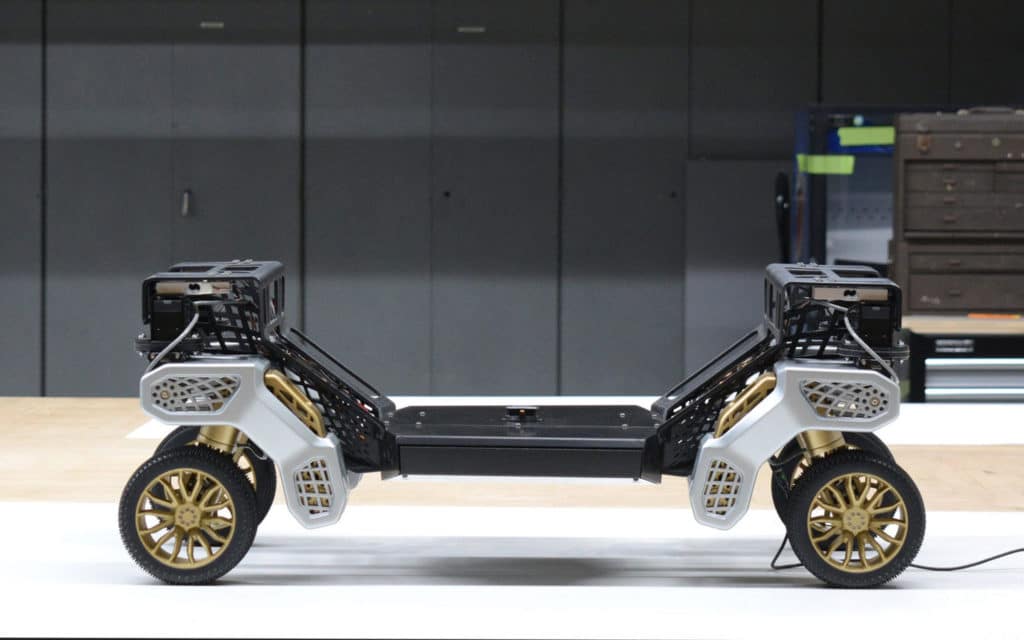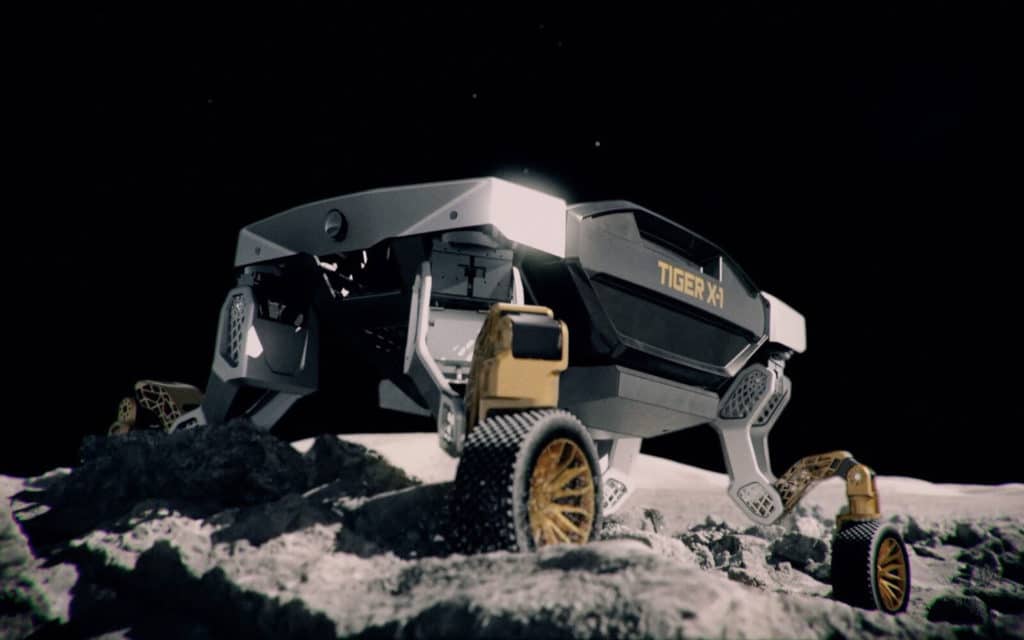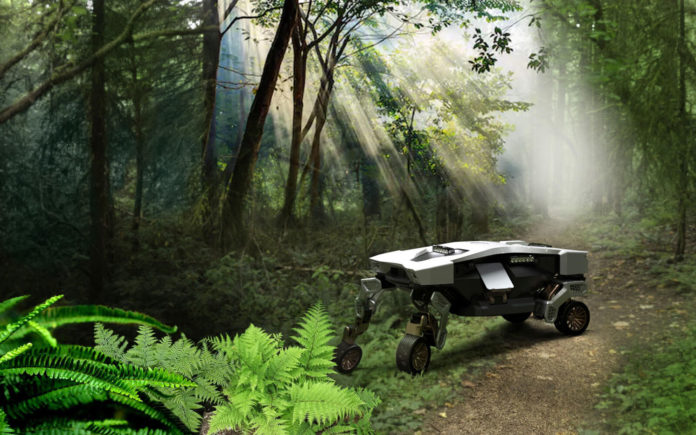Hyundai Motor Group has rolled out a new version of Elevate, the company’s first-ever four-legged “walking car” concept unveiled at CES 2019. Named TIGER, or Transforming Intelligent Ground Excursion Robot, the vehicle is the company’s first uncrewed ultimate mobility vehicle (UMV) concept.
The TIGER is being developed by Hyundai Motor Group’s New Horizons Studio in partnership with Autodesk, a company famous for engineering software. The robotic transport vehicle is based on modular platform architecture, equipped with a sophisticated leg and wheel locomotion system. It is designed to operate as a four-wheel-drive vehicle or a four-legged walking machine and is intended to carry payloads and scientific exploration over remote and inaccessible terrain.

With its legs retracted, Hyundai TIGER drives like an all-wheel-drive vehicle and is in its most efficient mode because it moves by rolling traction. But when the vehicle gets stuck or needs to travel over terrain that is difficult or impassable for wheels alone, it uses its walking ability to get unstuck or more easily travel over that terrain.
Despite the look close to that of the Boston Dynamics’ Spot robot dog, the model is designed with enough structure to transport cargo. It has a large load bay housed within its body, so the Hyundai TIGER can transport and deliver everything from emergency supplies to packages.

Additionally, the UMV has 360-degree directional control and a range of sensors for remote observation, plus GPS and 4G connectivity. There are also two radar panels that penetrate the ground for exploration.
The first experimental version, the TIGER X-1 (“eXperimental prototype-1”), brings together a wide range of technological and design expertise. It promises to be an alternative for scientific explorations in extreme and remote locations since it has the ability to move in almost any terrain.
One of the examples presented by Hyundai was the use in space missions, where the robot could face different types of soil on satellites or planets. According to the manufacturers, the X-1 can also be used in connection with unmanned aerial vehicles, which would be responsible for delivering and loading the X-1 in inaccessible places.
